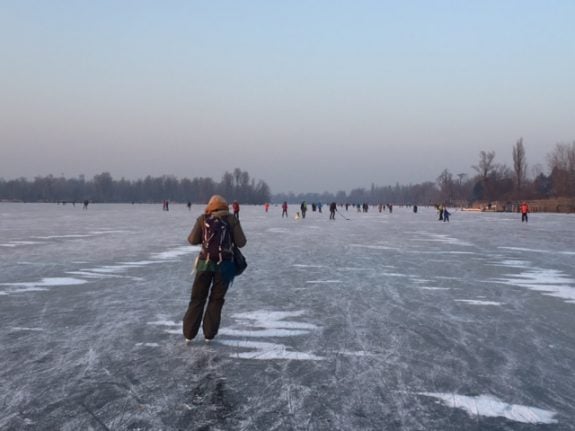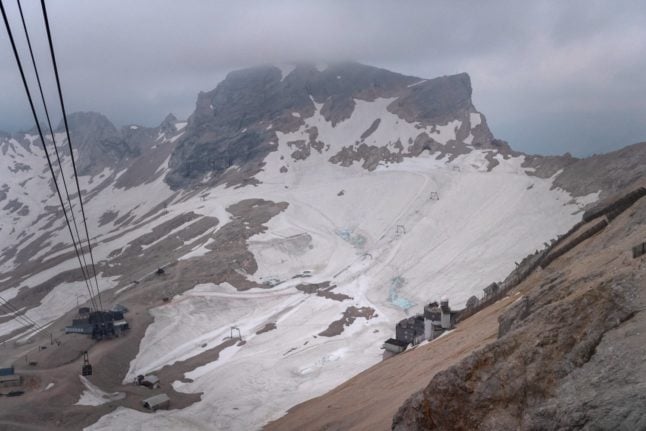Consistently low temperatures have caused the ice to thicken in recent days and nights. In Vienna, hundreds of people spent the weekend skating on the Danube river. However, city authorities have urged people to be mindful of the risks – and have warned that none of the natural ice-skating surfaces in Vienna have received an official safety approval as the thickness of the ice has not been tested.
The MA 45 website (the city department responsible for Vienna waterways) warns that people should not underestimate the risk of skating on frozen rivers and lakes, “even on still waters like the Old and New Danube”. Ground water tributaries are still around 7C, even in extremely cold weather, making the ice cover deceptively thin. “Other risks include water level fluctuations as well as holes in the ice under bridges and around pillars,” according to the MA 45.
In Carinthia, in southern Austria, the Lake Wörthersee ice-skating team regularly checks how thick the ice is on the region’s lakes. It still isn’t cold enough to skate on Wörthersee (it hasn’t been cold enough to skate on Wörthersee since 2006), but other lakes in the state have been given the all clear. Längsee lake has particularly good ice and beautiful conditions. Olympic gold medallist and ski racer Matthias Mayer posted a picture of himself skating on Lake Afritz on Sunday.
Ice has formed on Carinthia’s third largest lake, Lake Ossiach, but is still thin in many places and skating is not allowed. However, 40 foolhardy skaters ventured onto the ice on Saturday. Helmut Weissensteiner, director of the Austrian Water Rescue in Sattendorf, said that they had taken a huge risk and could have drowned. Luckily there were no accidents.
The ice on Europe’s largest natural skating rink, the Neusiedler See, has been safe for the past two weeks, with walkers, ice runners and hockey players all enjoying the ice. Ice skating is allowed on parts of the lake, but skaters are still warned to avoid snow covered areas and areas where the ice has opened. In some places the ice is also rough and bumpy. For up-to-date information on conditions there check the website or call one of the local “ice” numbers listed on the website.
The forecast for this week suggests that conditions will be perfect for ice-skating in the south and west of the country. It will remain cold, with lots of sunshine. According to the Central Institute of Meteorology and Geodynamics (ZAMG), temperatures as low as -19C can be expected in the south and west, especially in the morning.
The north, east and south-east of the country can expect foggier conditions early this week, with not much sunshine. Towards the end of the week it will get sunnier, with a moderate south-easterly wind from Neusiedler See to the Vienna basin. Maximum daily temperatures will range from -4C to 4C.



 Please whitelist us to continue reading.
Please whitelist us to continue reading.